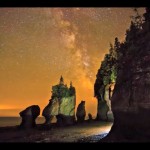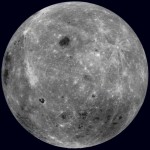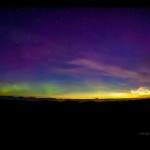
- Among the most brilliant and most rare objects in the night sky, a comet is a small, frozen mass of dust and gas revolving around the sun.. These soaring beacons with their beautiful tails come from the outer realms of the Solar System.

- A collection of stars, gas, and dust bound together by gravity. The smallest galaxies may contain only a few hundred thousand stars, while the largest galaxies have thousands of billions of stars. The Milky Way galaxy contains our solar system.

- Our Universe is so vast that we can’t possibly categorize it all, explore the uncategorized!

- A nebula is a cloud of gas and dust in space. Some nebulas are regions where new stars are being formed, while others are the remains of dead or dying stars. Nebulas come in many different shapes and sizes. There are four main types of nebulas: Planetary nebulas, Reflection nebulas, Emission nebulas, and Absorption nebulas. The word nebula comes from the Latin word for cloud.

- The sky, also known as the celestial dome, commonly refers to everything that lies a certain distance above the surface of Earth, including the atmosphere and the rest of outer space. In the field of astronomy, the sky is also called the celestial sphere. This is an imaginary dome where the sun, stars, planets, and the moon are seen to be traveling.

- A solar system consists of a star and all the objects orbiting it as well as all the material in that system. Our Solar System includes the Sun together with the eight planets and their moons as well as all other celestial bodies that orbit the sun.

- From rockets to observatory’s, explore the technology that powers space exploration.

- A star is a huge sphere of very hot, glowing gas. Stars produce their own light and energy by a process called nuclear fusion. Fusion happens when lighter elements are forced to become heavier elements. When this happens, a tremendous amount of energy is created causing the star to heat up and shine. Stars come in a variety of sizes and colors. Our Sun is an average sized yellowish star. Stars which are smaller than our Sun are reddish and larger stars are blue.

- These are just APOD’s I have yet to assign a category to, this will not be included in the final design.

- Explore APOD’s as moving pictures!
Looking for something?
loading










![The Great Comet of 1680 Over Rotterdam GreatComet1680_verschuier_681[1]](https://apod.rhettforbes.com/wp-content/uploads/2013/10/GreatComet1680_verschuier_6811-150x150.jpg)
![Three Galaxies and a Comet cometmcnaught_druckmuller_1084[1]](https://apod.rhettforbes.com/wp-content/uploads/2013/10/cometmcnaught_druckmuller_10841-150x150.jpg)
![ISON, Mars, Regulus 20131015_IRM_LawrenceIMG4471-Crop-fullsize[1]](https://apod.rhettforbes.com/wp-content/uploads/2013/10/20131015_IRM_LawrenceIMG4471-Crop-fullsize1-150x150.jpg)
![Hale-Bopp: The Great Comet of 1997 970401C_lodriguss_960[1]](https://apod.rhettforbes.com/wp-content/uploads/2013/10/970401C_lodriguss_9601-150x150.jpg)
![Comet ISON Approaches ison_peach_1174[1]](https://apod.rhettforbes.com/wp-content/uploads/2013/10/ison_peach_11741-150x150.jpg)
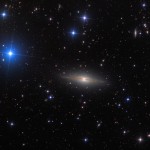
![Three Galaxies in Draco NGC5982_LRGB_leshin[1]](https://apod.rhettforbes.com/wp-content/uploads/2013/10/NGC5982_LRGB_leshin1-150x150.jpg)
![NGC 891 Edge-on n891_block950[1]](https://apod.rhettforbes.com/wp-content/uploads/2013/10/n891_block9501-150x150.jpg)

![Hubble Remix: Active Galaxy NGC 1275 n1275hst_kelly[1]](https://apod.rhettforbes.com/wp-content/uploads/2013/10/n1275hst_kelly1-150x150.jpg)
![Night on a Spooky Planet hverirVetter1300[1]](https://apod.rhettforbes.com/wp-content/uploads/2013/10/hverirVetter13001-150x150.jpg)
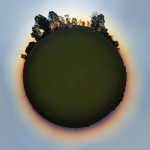
![Andromeda on the Rocks Andromeda_on_the_rocksFattinnanzi[1]](https://apod.rhettforbes.com/wp-content/uploads/2013/10/Andromeda_on_the_rocksFattinnanzi1-150x150.jpg)
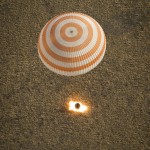
![NGC 7841: The Smoke Nebula in Frustriaus GS_20131023_Smoke_8422[1]](https://apod.rhettforbes.com/wp-content/uploads/2013/11/GS_20131023_Smoke_84221-150x150.jpg)
![A Spectre in the Eastern Veil ic1340mrZonalunar[1]](https://apod.rhettforbes.com/wp-content/uploads/2013/10/ic1340mrZonalunar1-150x150.jpg)
![Horsehead and Orion Nebulas orionwisps_colombari_3543[1]](https://apod.rhettforbes.com/wp-content/uploads/2013/10/orionwisps_colombari_35431-150x150.jpg)
![Sh2-155: The Cave Nebula CaveFinalWalker2048[1]](https://apod.rhettforbes.com/wp-content/uploads/2013/10/CaveFinalWalker20481-150x150.jpg)
![The Great Carina Nebula carina_fenyes_3000[1]](https://apod.rhettforbes.com/wp-content/uploads/2013/10/carina_fenyes_30001-150x150.jpg)
![North Celestial Tree NCPtreeLosada[1]](https://apod.rhettforbes.com/wp-content/uploads/2013/10/NCPtreeLosada1-150x150.jpg)
![Venus, Zodiacal Light, and the Galactic Center galcentre_venus_jschmoll[1]](https://apod.rhettforbes.com/wp-content/uploads/2013/10/galcentre_venus_jschmoll1-150x150.jpg)
![High Noon Analemma Over Azerbaijan noonalemma_tezel_1280[1]](https://apod.rhettforbes.com/wp-content/uploads/2013/10/noonalemma_tezel_12801-150x150.jpg)
![Saturn from Above saturnmosaic_cassini_4000[1]](https://apod.rhettforbes.com/wp-content/uploads/2013/10/saturnmosaic_cassini_40001-150x150.jpg)
![Equinox Earth EquinoxEarthElektroL900[1]](https://apod.rhettforbes.com/wp-content/uploads/2013/10/EquinoxEarthElektroL90011-150x150.jpg)
![Apollo's Analemma solar-analemma-070000-900pix[1]](https://apod.rhettforbes.com/wp-content/uploads/2013/10/solar-analemma-070000-900pix1-150x150.jpg)
![Crescent Moon Meets Evening Star MoonVenusArg_2013_09_08_2169_16[1]](https://apod.rhettforbes.com/wp-content/uploads/2013/10/MoonVenusArg_2013_09_08_2169_161-150x150.jpg)
![Venus and the Triply Ultraviolet Sun sunvenusuv3_dove_800[1]](https://apod.rhettforbes.com/wp-content/uploads/2013/10/sunvenusuv3_dove_8001-150x150.jpg)

![Skylab Over Earth skylab_nasa_3000[1]](https://apod.rhettforbes.com/wp-content/uploads/2013/10/skylab_nasa_30001-150x150.jpg)
![Wringing a Wet Towel in Orbit o-WASHCLOTH-SPACE-facebook[1]](https://apod.rhettforbes.com/wp-content/uploads/2013/04/o-WASHCLOTH-SPACE-facebook1-150x150.jpg)


![Sungrazer sungrazer_soho_1024[1]](https://apod.rhettforbes.com/wp-content/uploads/2013/10/sungrazer_soho_10241-150x150.gif)
![NGC 7789: Caroline's Rose NGC7789CarolinesRose_barr[1]](https://apod.rhettforbes.com/wp-content/uploads/2013/10/NGC7789CarolinesRose_barr1-150x150.jpg)
![A Massive Star in NGC 6357 ngc6357_hubble_3140[1]](https://apod.rhettforbes.com/wp-content/uploads/2013/10/ngc6357_hubble_31401-150x150.jpg)
![All the Colors of the Sun sunspectrum_noao_3071[1]](https://apod.rhettforbes.com/wp-content/uploads/2013/10/sunspectrum_noao_30711-150x150.jpg)

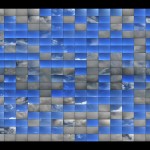
![Globular Star Cluster NGC 6752 ngc6752_2013_07_02dp[1]](https://apod.rhettforbes.com/wp-content/uploads/2013/10/ngc6752_2013_07_02dp11-150x150.jpg)
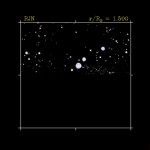
![Saturn's Hyperion: A Moon with Odd Craters hyperion_cassini_1024[1]](https://apod.rhettforbes.com/wp-content/uploads/2013/07/hyperion_cassini_10241-150x150.jpg)
